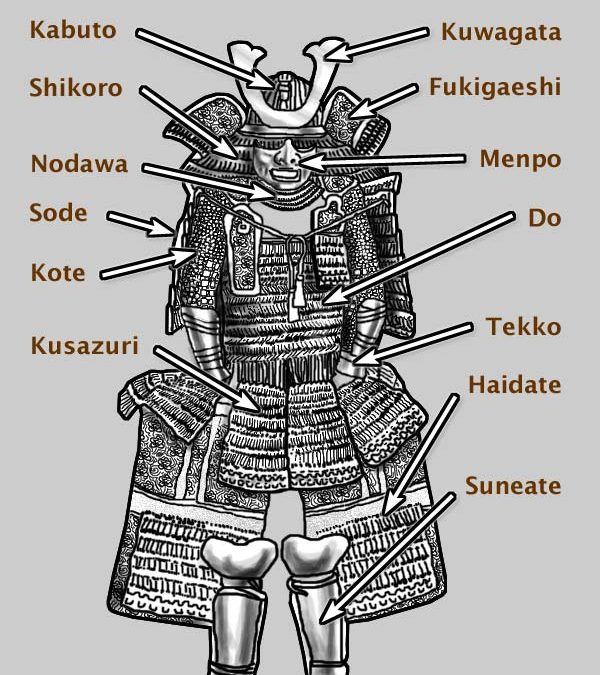What is the Sode?
The sode is a fundamental piece of the samurai armor, playing an essential role in the protection of the warrior. It is a rigid plate that protects the shoulders, fastening to the dō (central part of the armor) with straps and buckles, thus ensuring a secure and effective fit. The shape and size of the sode have evolved over the centuries, marking significant milestones in the history of Japanese armor.
During the Heian period (794-1185), the sode were relatively simple, exhibiting a rectangular design that covered only the shoulders. However, it was during the Muromachi period (1336-1573) that these pieces transformed into more elaborate elements, adopting curved shapes that not only protected the shoulders but also extended their coverage to the arms, offering greater defense in combat.
The materials used in the making of the sode vary considerably, adapting to factors such as budget, climate, and desired functionality. The sode could be made of:
- Leather: Flexible and lightweight, ideal for warm climates or for activities requiring agility, such as horseback riding.
- Silk: Often used for decoration, adding a touch of distinction.
- Metal: Provided greater protection, albeit at the cost of increased weight and reduced flexibility.
- Bamboo: A lighter and more versatile option that was also used in certain sode.

Beyond their defensive function, the sode were also a symbol of status and wealth. Samurai used these pieces to showcase their social distinction; some were decorated with intricate relief designs, such as flowers and animals, while others featured elaborate paintings or prints. Additionally, many sode incorporated the mon (family crest) of the samurai, facilitating the identification of the warrior in the heat of battle. In this way, the sode not only provided protection in battle but also served as a visual and symbolic record of the samurai's identity.
















